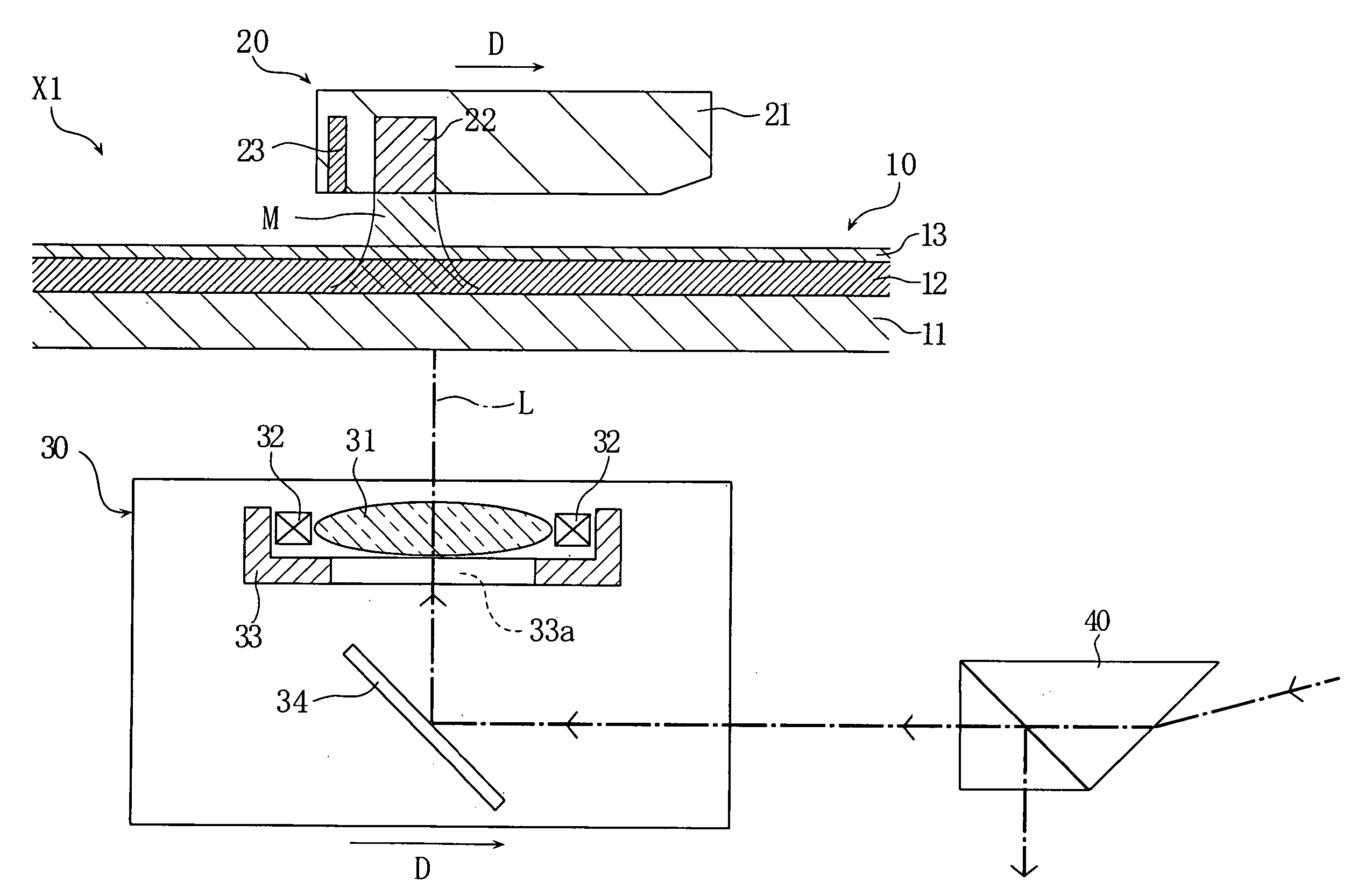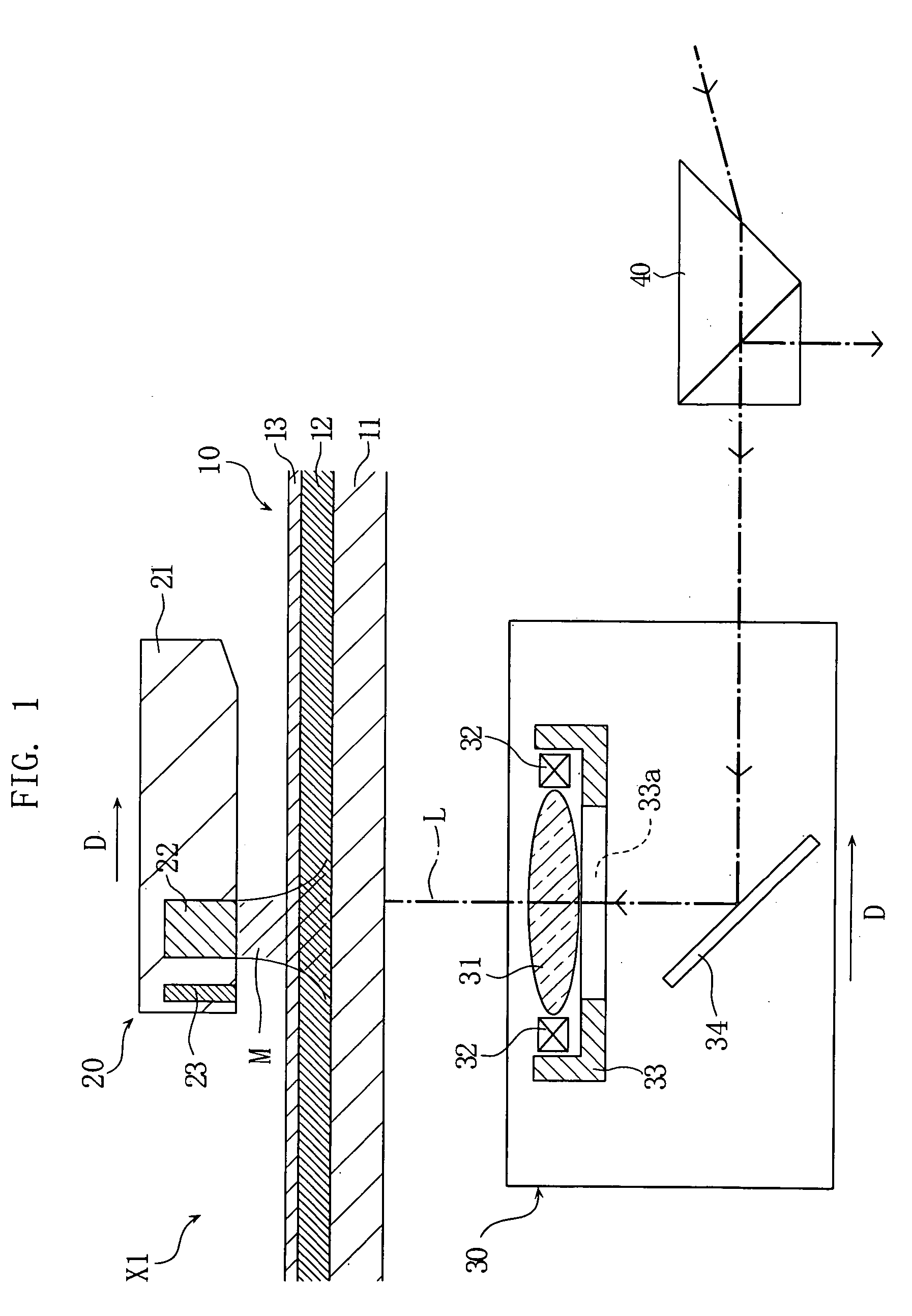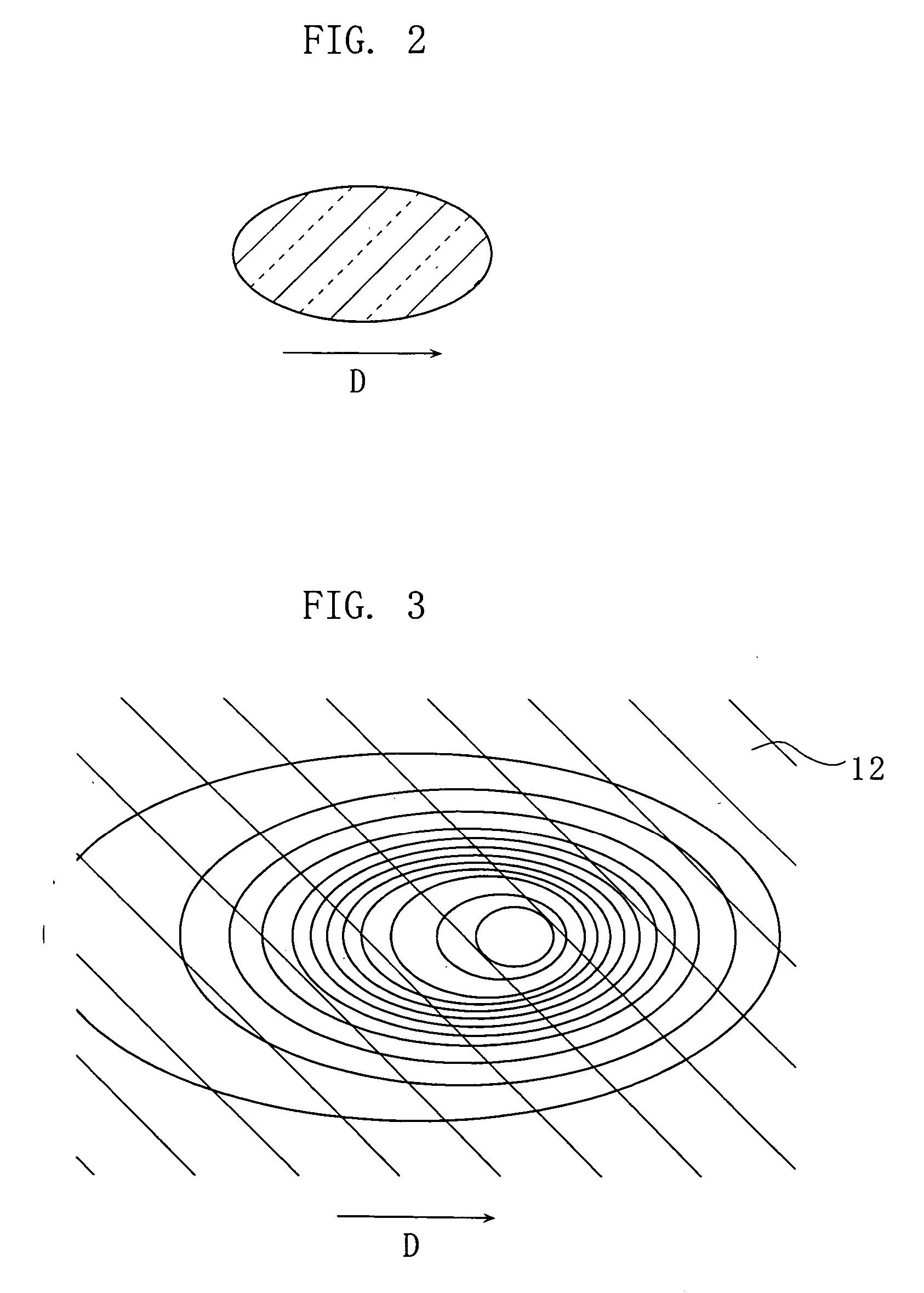Thermally assisted magnetic recording method
a magnetic recording and magnetic recording technology, applied in combination recording, data recording, instruments, etc., can solve the problems of increasing the density of the recording magnetic field that the magnetic head can apply, reducing the degree of thermal assisted magnetic recording, so as to reduce the ratio of peak temperatures and increase the distance between positions
- Summary
- Abstract
- Description
- Claims
- Application Information
AI Technical Summary
Benefits of technology
Problems solved by technology
Method used
Image
Examples
first embodiment
[0036]FIG. 1 is a schematic diagram showing a part of a magnetic disk apparatus X1 for executing a thermally assisted magnetic recording method according to the present invention. The magnetic disk apparatus X1 includes a magnetic disk 10, a magnetic head 20, an optical head 30, and a composite element 40, for recording and reproducing information on and from the magnetic disk 10, by the thermally assisted magnetic recording method.
[0037] The magnetic disk 10 has a stacked structure including a disk substrate 11, a recording layer 12, and a cover layer 13, so as to serve as a magnetic recording medium under the thermally assisted magnetic recording system. The disk substrate 11 primarily serves for granting the magnetic disk 10 with sufficient rigidity, and may be constituted of an aluminum alloy, a glass, or a resin. The recording layer 12 is constituted of a vertical magnetized layer or a in-plane magnetized layer, and serves as a recording surface on which information is recorded...
second embodiment
[0046]FIG. 5 is a schematic diagram showing a part of a magnetic disk apparatus X2 for executing a thermally assisted magnetic recording method according to the present invention. The magnetic disk apparatus X2 includes a magnetic disk 10 and a recording / reproducing head 50, for recording and reproducing information on and from the magnetic disk 10, by the thermally assisted magnetic recording method.
[0047] The magnetic disk 10 has a stacked structure including a disk substrate 11, a recording layer 12, and a cover layer 13, so as to serve as a magnetic recording medium under the thermally assisted magnetic recording system. The materials constituting the magnetic disk 10 are the same as those employed in the first embodiment.
[0048] The recording / reproducing head 50 includes a slider body 51, a heating element 52, a recording element 53, and a reproducing element 54, and is disposed so as to face the recording layer 12 of the magnetic disk 10, when the magnetic disk apparatus X2 re...
third embodiment
[0054]FIG. 7 is a schematic diagram showing a part of a magnetic disk apparatus X3 for executing a thermally assisted magnetic recording method according to the present invention. The magnetic disk apparatus X3 includes a magnetic disk 10 and a recording / reproducing head 60, for recording and reproducing information on and from the magnetic disk 10, by the thermally assisted magnetic recording method.
[0055] The magnetic disk 10 has a stacked structure including a disk substrate 11, a recording layer 12, and a cover layer 13, so as to serve as a magnetic recording medium under the thermally assisted magnetic recording system. The materials constituting the magnetic disk 10 are the same as those employed in the first embodiment.
[0056] The recording / reproducing head 60 includes a slider body 61, laser elements 62A, 62B, a recording element 63, and a reproducing element 64, and is disposed so as to face the recording layer 12 of the magnetic disk 10, when the magnetic disk apparatus X3...
PUM
| Property | Measurement | Unit |
|---|---|---|
| recording magnetic field | aaaaa | aaaaa |
| peak temperatures | aaaaa | aaaaa |
| peak temperature | aaaaa | aaaaa |
Abstract
Description
Claims
Application Information
 Login to View More
Login to View More - R&D
- Intellectual Property
- Life Sciences
- Materials
- Tech Scout
- Unparalleled Data Quality
- Higher Quality Content
- 60% Fewer Hallucinations
Browse by: Latest US Patents, China's latest patents, Technical Efficacy Thesaurus, Application Domain, Technology Topic, Popular Technical Reports.
© 2025 PatSnap. All rights reserved.Legal|Privacy policy|Modern Slavery Act Transparency Statement|Sitemap|About US| Contact US: help@patsnap.com



